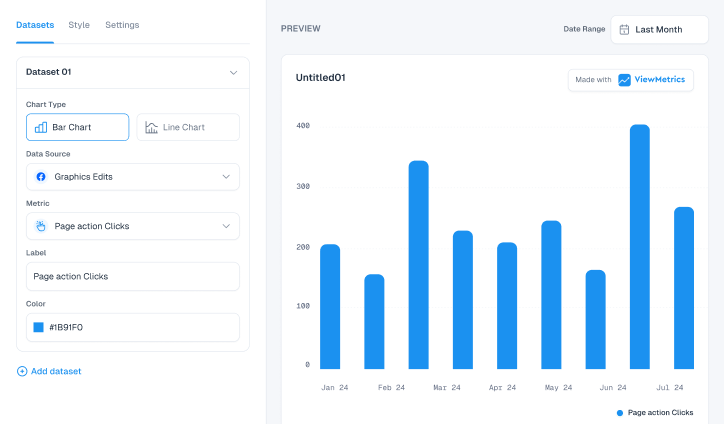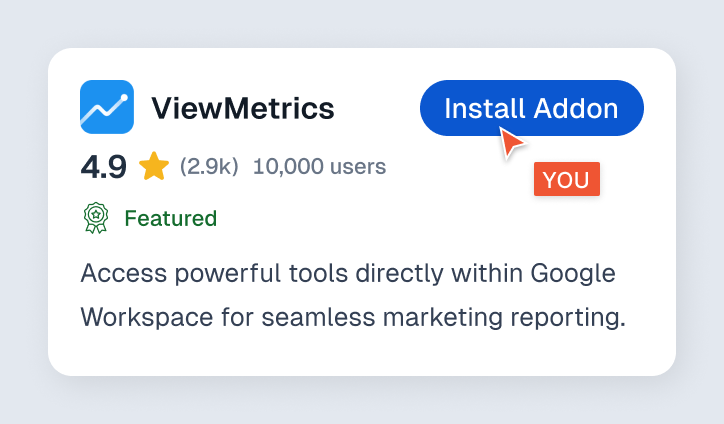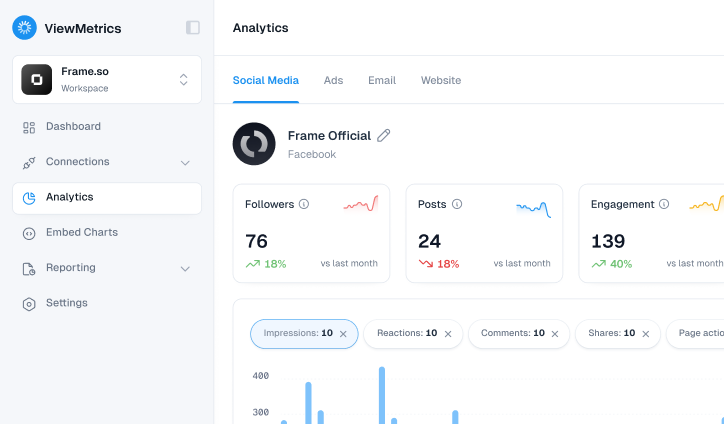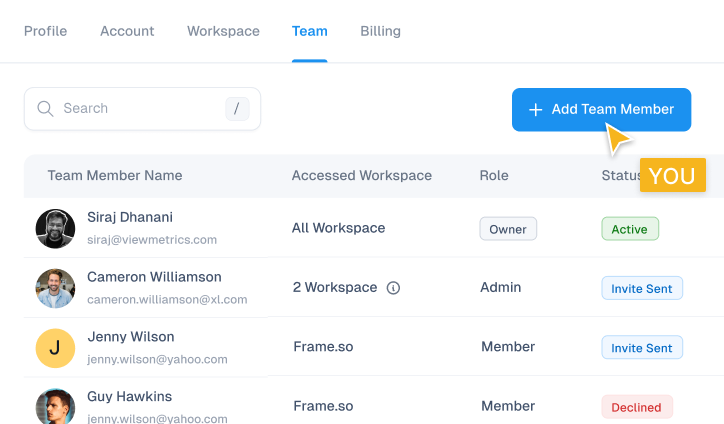Summary for the Blog
- Data tracking is the process of collecting and analyzing information from various sources to gain insights into business operations, customer behavior, and market trends.
- The article identifies several types of data, including Personal and Engagement Data, Behavioral and Attitudinal Data, Browser, Device, and Event Data, Operational Data, and Market and Financial Data.
- Common methods for data tracking include using cookies, welcome surveys, tag features, custom events, and trigger surveys.
- The benefits of data tracking are creating better customer experiences, improving marketing ROI through smarter decisions, and ensuring compliance with data regulations.
In today’s digital age, data is the backbone of successful businesses. It informs strategies, drives decision-making, and fuels growth. But data isn’t just a static resource; it can be a powerful tool for a range of activities, and tracking is a crucial part of this.
Data tracking is more than collecting numbers. It involves consistently measuring, monitoring, and analyzing information to uncover patterns and insights that support smarter decision-making. When businesses track data accurately, they can identify what’s working, what needs improvement, and where new opportunities lie.
By effectively leveraging data tracking, companies transform raw information into strategic assets, maintaining their competitive edge in an ever-evolving market.
What is Data Tracking?
It is the process of gathering and analyzing information from various sources to get a clearer picture of your business. It means keeping tabs on important metrics like customer behavior, market trends, and how your operations are running.
Why is this so important? Because it gives you a real-time look at what’s going on. It helps you spot patterns, see what’s working or not, and make decisions based on solid facts rather than guesswork.
Whether you’re tracking customer habits, market shifts, or your financial health, data tracking provides the insights you need to make smart choices and drive your success.
Also read: Data Blending – A Complete Guide
What Are the Main Types of Data Tracking?
The main types of data tracking include personal and engagement data, behavioural and attitudinal data, browser, device, and event data, which help you understand who your users are and how they interact. Businesses also track operational, financial, and market data to monitor performance and industry trends. Together, these data types offer a complete picture for better decisions and improved outcomes.
Here’s a closer look at what you can track and how it can make a real difference for your business:

Personal and Engagement Data
This data is all about getting to know your audience on a deeper level. Personal data, like names and contact info, forms the basic foundation of who your customers are.
When you combine this with engagement data, like how often someone checks out your website or interacts with your social media, you start to get a clearer picture of their interests and behaviors.
With this understanding, you can tailor your marketing efforts to speak directly to your audience, creating messages and offers that genuinely resonate with them.
Behavioral and Attitudinal Data
Think of this data as diving into both your customers’ actions and their feelings. Behavioral data shows you what people are doing- whether it’s their purchase history or how they’re using your services. Attitudinal data, on the other hand, gives you insight into how they feel about your brand, gathered through things like reviews and surveys.
Together, these data types give you a full-circle view of your customers, helping you fine-tune your products, improve their experience, and address any pain points that might be holding them back.
Browser, Device, and Event Data
Knowing which devices and browsers your audience uses is key to making sure they have a smooth experience. When you pair this with event data, like what links they’re clicking or how long they’re staying on a page, you get a clear sense of how people are interacting with your digital content.
This insight allows you to make necessary tweaks to your website or ads, ensuring they perform well no matter how or where your audience is engaging with them.
Operational Data
This data gives you a peek behind the scenes at how your business is running. By keeping tabs on things like production efficiency, inventory, and employee performance, you can spot any issues and make improvements.
Focusing on these operational metrics helps you streamline your processes, boost productivity, and cut down on costs, making your business run more efficiently overall.
Market and Financial Data
Market data keeps you in the loop about what’s happening in your industry, how your competitors are performing, and what customers are saying. Financial data, meanwhile, gives you a clear picture of your business’s financial health, from revenue to expenses.
When you combine these insights, you’re better equipped to make strategic decisions that keep your business competitive and financially sound.
View All Your Marketing and Website Data — Instantly
Connect Instagram, Mailchimp, Google Analytics & more
Pre-built dashboards, no setup needed
Save hours on reporting every week

Data Tracking Methods
To truly understand your audience and refine your strategies, you need the right tools and methods for tracking data. Here’s a breakdown of some effective data tracking methods, showing how they tie into the types of data you’re already gathering:
![]()
Cookies
Think of cookies as your website’s memory, storing small pieces of information on a user’s computer or mobile device. They track which web pages your visitors view, how long they stay, and even their preferences. This method is closely related to Browser and Device Data as well as Engagement Data.
By analyzing cookie data, you can personalize user experiences, such as recommending products based on previous visits or displaying relevant ads. However, it’s important to note that using cookies requires adherence to privacy laws, especially when they involve third-party services.
Welcome Surveys
First impressions matter, and welcome surveys are your opportunity to make a good one. By asking users about their roles, company size, and goals at the start of their journey, you gather Personal Data and Attitudinal Data.
This information helps segment your audience and personalize their experiences, from tailoring content to guiding them through your product. Plus, these surveys allow you to track important metrics like activation and retention rates, ensuring you identify customers who are thriving and those who might need a bit more attention.
Tag Features
Feature tags are like labels you can place on specific elements of your website to see how users interact with them. This is particularly useful for tracking Engagement Data and Behavioral Data. By analyzing user interactions, such as hovers, clicks, and text inputs, you can identify which features are working well and which ones might need improvement.
For example, spotting dead clicks (where users click but nothing happens) or rage clicks (repeated clicks due to frustration) can help you enhance the user experience by addressing these pain points.
Custom Events
Custom events allow you to set up tailored tracking for specific user actions that matter most to your business. This method is essential for capturing Behavioral Data throughout the user journey. By tracking custom events, you can measure progress towards key milestones, like reaching an activation point.
Event tracking software then provides insights into how many users hit these milestones and calculates the activation rate, helping you fine-tune your engagement funnel to improve conversion rates.
Trigger Surveys
Triggered in-app micro-surveys are a direct way to capture customer feedback at key moments in their journey. These surveys, such as Customer Satisfaction Score (CSAT), Customer Effort Score (CES), and Net Promoter Score (NPS), are excellent tools for gathering Attitudinal Data.
For instance, you can deploy a survey right after the onboarding process to get feedback on the experience. The responses help you understand customer satisfaction and identify areas that need improvement. Adding follow-up questions allows customers to provide more detailed feedback, giving you precise insights for fine-tuning your product or service.
Also Read: What is QBR and How Does it Benefit Your Business?
What Are the Benefits of Data Tracking?
Creating Better Customer Experiences
As discussed, by tracking customer interactions across digital platforms, you gain valuable insights into their preferences and behaviors. This allows you to personalize experiences, from product offerings to marketing messages, making each touchpoint more relevant and engaging. The result? Stronger customer loyalty and a better overall experience.
Making Smarter Decisions and Boosting Marketing ROI
- Data tracking helps turn raw numbers into insights, enabling smarter and more confident decision-making.
- It removes guesswork by showing what’s actually happening across your marketing and business activities.
- If a campaign underperforms, the data highlights what needs to change and where improvements can be made.
- Tracking helps you identify trends, understand customer behaviour, and optimise strategies in real time.
- It supports decisions like shifting budget from one platform to another or refining a product based on user responses.
- According to Forbes, companies that use data-driven marketing are more likely to achieve consistent profits.
- By analysing data, brands can build campaigns aligned with customer needs and current trends, improving ROI and resource allocation.
Compliance and Risk Management
With data regulations tightening up, keeping track of how you collect and use data is crucial. Data tracking helps you stay on top of compliance requirements like GDPR, reducing the risk of fines and building trust with your audience.
Ethical Considerations in Data Tracking
Data tracking can be highly beneficial, but it must be handled ethically. Here’s a quick guide:
- Transparency: Clearly communicate what data you collect, how you use it, and who else might access it. Make this information easy to understand to build trust.
- Consent and Control: Always get explicit permission before collecting data and give users control over their information, including access and deletion.
- Privacy and Security: Protect personal data with robust security measures to prevent unauthorized access and breaches.
- Fairness and Non-Discrimination: Ensure your data practices are fair and inclusive, avoiding bias and reinforcing equality.
- Data Minimization: Collect only the data you need. This helps reduce risks and respects user privacy.
- Accountability: Take responsibility for the data you handle. Address any issues promptly and transparently to maintain trust.
How to Effectively Track Data?
To get the most out of data tracking, businesses need to implement a structured approach:

Create a Data-Tracking Plan
- Define Goals and Objectives: Set clear goals for what you want to achieve with data tracking.
- Identify Key Metrics: Determine which metrics will help you measure progress toward your goals.
- Determine Data to Track: Specify the types of data to collect, such as customer demographics or sources of website traffic (e.g., Google, social media, email).
- Specify Tracking Locations: Identify where to track data, focusing on specific areas like your website, email campaigns, or social media.
- Clarify Data Tracking Reasons: Understand and document why you are tracking data, such as improving advertising effectiveness or evaluating new products.
Choose Data Collection Methods
- Understand the Data Resources: Assess available data sources and their relevance.
- Ensure Data Quality: Implement procedures to maintain data accuracy, completeness, and reliability.
- Use Data Collection Tools: Select appropriate tools and technologies for gathering data.
- Prioritize Data Security and Compliance: Adhere to data protection regulations and implement security measures to safeguard information.
- Focus on Data Storage and Management: Plan for effective data storage solutions and management practices.
Data Integration
- Implement Data Integration: Combine data from various sources to create a cohesive dataset.
- Utilize Data Visualization and Reporting: Use visualization tools and reports to present data insights clearly.
- Automate Where Possible: Streamline data collection and processing through automation to reduce manual effort.
- Monitor and Maintain: Continuously oversee and maintain your data tracking systems.
- Conduct Regular Audits: Regularly review and audit your data tracking practices to ensure effectiveness and compliance.
Also Read: Customer Data Integration: A Complete Guide
How Does ViewMetrics Help in Data Tracking?
ViewMetrics transforms the way you track data by bringing all your marketing insights together in one spot. Instead of hopping between different platforms, ViewMetrics lets you connect all your marketing accounts in one place. It even integrates charts right into your project management tools, so you can easily keep tabs on your campaigns without the usual hassle.
Why You’ll Love Using ViewMetrics:
- Save Time: Let ViewMetrics handle the heavy lifting of report creation, so you can focus on what really matters.
- Boost Accuracy: With all your data in one place, your reports will be spot-on every time.
- Build Client Trust: Share straightforward, easy-to-understand reports with your clients and build stronger relationships.
- Make Smarter Decisions: Use combined data insights to tweak and improve your campaigns for better results.
ViewMetrics simplifies your data tracking and helps you stay on top of your marketing game effortlessly.
View All Your Marketing and Website Data — Instantly
Connect Instagram, Mailchimp, Google Analytics & more
Pre-built dashboards, no setup needed
Save hours on reporting every week

Conclusion
Data tracking doesn’t have to be a chore. With the right tools and mindset, it becomes a straightforward way to keep your business on track and moving forward. ViewMetrics takes the complexity out of data management, letting you see everything you need in one place.
Instead of getting bogged down by scattered information, imagine having a clear, cohesive view of your marketing efforts at your fingertips. It’s not about the data itself, but about how you use it to make smarter choices and build stronger connections.
By simplifying your data tracking, you make room for more strategic thinking and less hassle. Dive into this approach, and you’ll find that data can be a valuable asset that helps guide your business toward its goals.
FAQs
1. How often should I generate data tracking reports?
Most businesses generate data tracking reports weekly or monthly, but high-activity teams may review them daily. The goal is to monitor trends early and act before issues escalate.
2. How do I ensure data quality?
Ensure data quality by removing duplicates, validating entries, standardizing formats, and regularly auditing tracking setups. Using automated checks helps maintain accuracy over time.
3. What is the difference between behavioral and transactional tracking?
Behavioural tracking follows how users interact, clicks, page views, and sessions, while transactional tracking records what users purchase or submit, such as orders or payments. Together, they give a complete view of user intent and value.











